Lingual Braces: History and Benefits

Several decades ago, traditional metal braces were the only option available for patients to get a beautiful, straight smile. However, the traditional take on braces changed when lingual braces were introduced. These are metal braces that go in your mouth, except they are bonded to the back of your teeth instead of the front. This option is a popular one for teens and adults, as they can hide their metal braces in their mouth as they straighten the teeth.
What Are Traditional Metal Braces?
Metal braces are “traditional” because the bracket-and-wire design they have has been used for decades. Before 1970, orthodontists anchored metal brackets to the center of each tooth and wound wires around the teeth to straighten them. After 1970, orthodontists continued to use metal anchorage devices (called brackets) on the front and center of each tooth.
A metal archwire was sufficient for straightening when it ran along the upper and lower jaws across the front of the teeth. Traditional braces use a system of archwires and brackets that are bonded to the teeth to shift them into their ideal position. When we see you at your frequent checkups, we will adjust the archwire, which will exert more pressure on your teeth, moving them in place.
The back molars will have metal bands that fit all the way around the back molars of the teeth. This is where the archwire will attach and be stabilized. Both top and bottom jaws will have these bands on them. The brackets on each tooth will have a rubber band around them, which are removable. They help keep your bracket hooks from catching on your mouth.
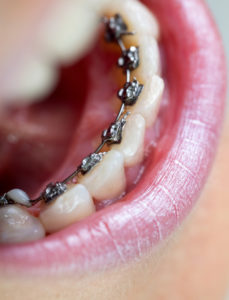
How Are Lingual Braces Different?
Lingual braces are similar to traditional metal braces. Many people don’t aesthetically like the look of metal braces, but they love their final straight smile. Metal braces are the strongest and are highly effective for achieving a beautiful smile. What can patients do if they want a straight smile but they don’t want braces front and center? Put that metal on the inside of the mouth between the teeth and the tongue!
Lingual braces are metal braces just like the traditional version, except that they are on the tongue-side of your teeth. However, there isn’t as much room on the back of your teeth like there is on the front of your teeth. If you notice, there is also a bit of a curve to the back of some of your teeth. That bracket-and-wire design can’t be exactly like the traditional version, but the design can be similar.
Using the same idea as traditional metal braces, you can achieve the same results as traditional braces, only with a hidden treatment apparatus on the tongue-side of your teeth. Patients that choose this option have impressions made of their mouth that focus on the backs of their teeth. After those impressions are sent to a special lab, metal backings for the teeth are made that are then bonded to the back of your teeth. They are almost like metal coverings for the entire tooth back, and often are silver or gold in color. These metal coverings also have small metal brackets and wires that discreetly correct bite and alignment issues over time. The concept is similar, but the design is tweaked to give lingual braces the same stability as traditional metal ones.
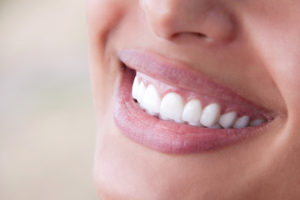
The Invention of Lingual Braces
- The push for hidden braces first started in the 70s with celebrities and public figures that wanted straighter teeth without visible metal braces.
- Craven Kurz and Jim Mulick were the first to develop prototypes for these braces in 1975. Craven Kurz was an orthodontist who later founded the American Lingual Orthodontic Association. Jim Mulick was the man Kurz partnered with from the UCLA School of Dentistry.
- The first prototypes of lingual braces led to tongue irritation and bracket breaks, which were resolved by inventing an inclined plane for these braces.
- Lingual braces are usually made of stainless steel, but they can also be made out of titanium.
- Craven Kurz applied for a patent in 1976 and the first lingual braces were produced in 1979. Ormco was the company Kurz partnered with that eventually created 7 different generations of lingual models until the current model.
- Each model involved changes to the orthodontic appliance including the additions of hooks and crannies, anterior and molar brackets and hooks, inclined planes, torque values, transpalatal bar hooks and a heart-shaped inclined plane.
- There are various designs of lingual braces that will vary based on how they look and how they are attached to the teeth. We use the “Incognito” style, but you may also hear types such as “iBraces”, “In-Ovation”, “STb Light Lingual System” and “Suresmile Lingual QT”.
How Do You Benefit?
Getting braces at all is a major step in the right direction if you want to be successful. Studies show that people who straighten their teeth often feel more confident in themselves, and their actions become more confident. Due to social, economic or aesthetic concerns, many patients may have the desire to straighten their teeth, but they don’t want to have metal braces on their teeth. For adults with careers or active social lives, they may view traditional metal braces as something only children and teens have.
However, at least 1/4th of patients with braces are adults. You simply may not see those braces because they have invisible braces like lingual braces. Lingual braces can achieve the same effect as regular metal braces without being seen. For a career setting, you can keep your white smile as it slowly becomes straighter overtime. For athletes, there isn’t a worry about dental injuries, as brackets and wires won’t cut up the cheeks or gums. Those who play wind instruments will find that lingual braces are much easier to play with than traditional braces. You get both the aesthetic appeal with sturdy straightening power with lingual braces. If you would like your free consultation, call Belmar Orthodontics today at (303) 225-9016!
Choosing to Have Adult Braces

If you are an adult with crooked teeth, you may think that you already missed your opportunity to get braces. However, adult braces are very popular. In fact, at least 1/4th of all braces wearers are adults. You simply might not see braces on many of your peers because adults have a couple orthodontic options that stay hidden in the mouth. Find out if you should choose to have adult braces, what the benefits are, and what options you have to straighten your teeth discreetly!
Do Adults Wear Braces?
The American Association of Orthodontics recommends that every person have an orthodontic evaluation between the ages of 7 and 8. This is prime time for orthodontists to correct bite and alignment issues that can become severe as a child ages. However, not everyone knows that they need to see an orthodontist, nor do many people have the means to receive orthodontic care due to cost. That opportunity may come when you are an adult. Have you missed the mark if you’re already an adult instead of a child? Certainly not!
Orthodontic treatment is a bit harder when you are an adult, but it is not too tricky for us to manage. Orthodontists recommend that children and teens get braces for bite, alignment and issues with crooked tooth when young. This is because the jaws are still growing and the teeth and jaws are more moldable until a teen grows older. As an adult, the jaws have hardened into place, so shifting the teeth and jaws is much more difficult.
However, modern technology definitely allows adults to change their smiles as they please. In fact, 1/4th of all people wearing braces are adults! Adult braces are becoming more and more popular as jobs become more competitive. Adult braces can really give people the edge they need to succeed because it creates a more beautiful, straight smile.
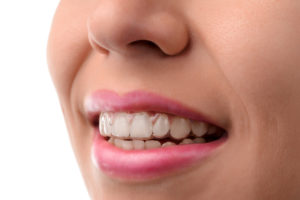
Benefits of Choosing Adult Braces
There is more than just the aesthetics of receiving adult braces. Getting braces can not only improve your appearance, but they can radically change your oral health. Did you know that your risk for tooth decay and gum disease is significantly less with braces? This is because the teeth become straighter, getting rid of all the nooks and crannies plaque and bacteria cluster in with crooked teeth. The teeth are easier to clean, and your smile looks much better, so you’ll actually want to clean your teeth more often.
Many people do love what adult braces can offer their smile. The main advantage is confidence. Many studies have been conducted on the confidence that a smile can bring not only to a person but to others. When you feel self-conscious of how your teeth look, you’re less likely to show your smile to others. This can happen even with children, who may become more introverted because they are self-conscious. However, when smiles are healthy and straight, people tend to show them off more. The more smiling, the more confidence a person feels and the more likely they are to be perceived as such.
The company that invented Invisalign actually conducted studies about this very thing. They found that people who had better, straighter smiles appeared much more confident than those with crooked smiles. The patients themselves felt 60% happier, more attractive and more successful, and others saw them as such. Those with straight smiles were more likely to land a job over their competition and were more likely to be successful with home, school and social life. They were also perceived as 72% more trustworthy just based on first impressions. The benefits of adult braces are endless and all benefit you!
What Options Do You Have?
Adults have all the orthodontic options available to them for straightening:
- Traditional Metal Braces: Consists of a metal bracket and wire design.
- Ceramic Braces: These are very similar to traditional braces, except they are made from white, ceramic material that helps hide them in the mouth. Ceramic material helps prevent tooth demineralization.
- Lingual Adult Braces: These are metal braces that fit behind the teeth and are bonded to the backs of your teeth. Molds are made of the teeth so that the metal can be custom-made to cover your teeth. This option is a preferred one among adults seeking adult braces.
- Invisalign: This orthodontic treatment consists of transparent aligners that are customized to your mouth with a digital machine. You will get a new aligner each week, which you place in your mouth like a retainer. They stay hidden in your mouth, can be removed for regular oral hygiene cleaning and eating, and you get a better smile!
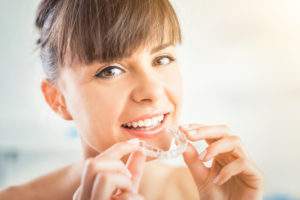
What Can You Expect?
Many people aren’t quite sure what to expect from their first orthodontic visit, as orthodontists don’t do the same work that dentists do. Dr. Hardy will meet with you for an oral evaluation and orthodontics consultation. He will examine your bite and alignment and will determine your candidacy for specific procedures if they are needed. Oral health issues—such as periodontal (gum) disease—will have to be resolved before the teeth can be straightened.
If bite and alignment issues are not present, you can move forward with regular straightening treatment. Dr. Hardy will take impressions of your teeth and will plan out a trajectory of your orthodontic plan. This is where you can know how long you will wear braces and how your mouth should look by the end of your treatment. You will also choose which orthodontic option you would like (traditional, lingual, ceramic or Invisalign) so that appliances can be made to fit your mouth.
After your consultation, your next appointment will be your braces fitting. After that, it’s easy to care for your mouth between quick adjustment appointments. Always brush and floss your teeth, and do these two habits more often than you used to. If you are wanting adult braces, consider Invisalign or lingual braces, as these options keep your orthodontics concealed if you need them to be. For all your questions about adult braces, call Belmar Orthodontics today at (303) 225-9016!
Child Orthodontics Compared to Adult Orthodontics
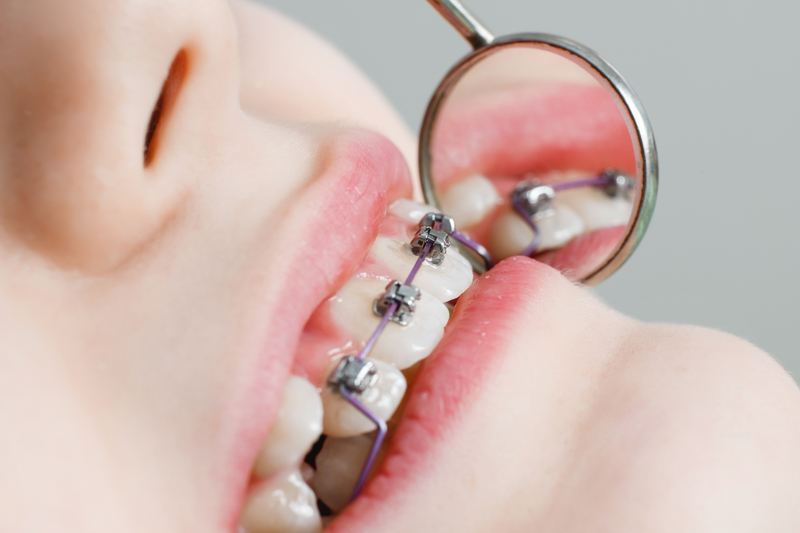
Did you know that about 1/4th of all people with braces are children? Millions of Americans receive orthodontic treatment for bite and alignment correction and for straightening the teeth. However, adults require treatment differently and for longer than a child would need, and child orthodontics have different goals for patients than adult orthodontics do. Both of these areas of orthodontics differ, but are also very similar in techniques used to create a beautiful smile.
Orthodontic Treatment
Orthodontic treatment is one of the easiest ways to help improve your health. Braces can help correct major oral health problems and can help avoid dental emergencies in the future. In children and adults, braces straighten the teeth so that they are aligned properly for speech, eating, biting and more. Straighter teeth are easier to clean and easier to manage, which leads to better health. Teeth must come in at specific places in the mouth for both children and adults. Child orthodontics focuses on that proper bite and tooth placement, and adult orthodontics seeks to improve the look of a smile.
Child Orthodontics
Did you know that children often wear braces, only to get them again as adolescents? Child orthodontics is a popular orthodontic option for at least 1/4th of braces wearers. Dentistry has been around enough centuries to know that the teeth, bite, alignment and growth happen in a specific way. Teeth must come in at the right spot and must be aligned in a specific manner in the jaw. As a child begins to get their baby teeth, some may be crooked. Depending on oral health conditions, and problems such as thumb-sucking, the shape of the teeth and bite can change.
Some children will have teeth that protrude outward, inward, or teeth that are in various directions. This leaves them open to the risk of broken or fractured teeth, tooth decay and problems with speech and development. Child orthodontics is the first phase of getting braces early. It focuses on getting the jaws lined up correctly and the teeth resting on each other in the right way. Once that happens, the baby teeth can fall out and the adult teeth can smoothly come into place. Child orthodontics will correct the major issues a child’s mouth has when they are around 7 or 8 years old. Starting at 11 and later, braces will seek to make the teeth look more attractive.
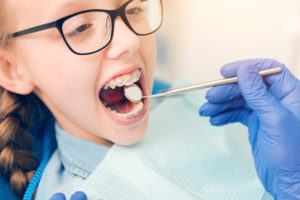
Adult Orthodontics
Most people think that teens make up the majority of patients with braces. However, adult orthodontics is very popular as well, with about 1/4th of all orthodontic patients being adults. There are more adults wearing orthodontic appliances than you realize, especially because of the “invisible options” they have that children don’t have.
Adults have a harder time with straightening their teeth than children do. By adulthood, the mouth and jaws have stopped growing, making them less moldable than a child’s jaws. The treatment that would have been easy for a child may take twice as long for an adult, or may require surgical orthodontics to achieve a straight smile, or proper bite and alignment. However, adults get the benefits of Invisalign treatment and lingual braces, which most children can’t have.
Invisalign is an “invisible” straightening option for adults and teens that uses a strong, clear aligner to straighten the teeth. Digital scanning creates customized aligners that a patient changes out ever 1-2 weeks, which slowly shift the teeth into their proper place. This invisible option allows adults and teens to brush, floss, eat and play sports without brackets and wires in the way. Lingual braces is another “invisible” straightening option. It has metal brackets and wires, except they’re placed on the back of the teeth. Only an adult can use these, as the baby teeth are not large enough for lingual braces to fit. Both adult orthodontics and child orthodontics correct bite, alignment and tooth issues, but the options available to the two age groups differ slightly.
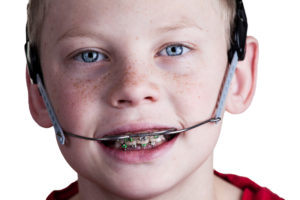
Why Choose Either Option?
When considering orthodontic treatment, there are various aspects you have to think about that include cost, health changes, aesthetic appeal and more. Many people think that braces are very expensive, when they are actually quite affordable. Your family may even save more money over time because of the oral health problems that are avoided by proper orthodontic treatment. A major reason so many people have orthodontic treatment is that they want to improve their smiles. Not only does a straight smile look beautiful, but it helps patients feel more confident. Studies show that child orthodontics helps children feel more confident in school and they do better academically.
Braces can correct speech problems caused by bite and alignment issues. They can straighten the teeth, making them easier to clean, and thus reducing problems with tooth decay, gum disease and bad breath. People socially perceive patients in a more positive way if their smiles are straighter and healthier. No matter if you choose orthodontic treatment for aesthetic appeal or for health reasons, the benefits are worth the time, effort and money you put into your treatment.
Conservative Treatment
Dr. Hardy practices a conservative approach to orthodontic treatment. While it is important for children to have an early orthodontic assessment to look for serious dental concerns (around age 7), the majority of children will not require orthodontic treatment before age 11. Your child might need child orthodontics or they may only need orthodontic treatment as a teen. Some people are naturally born with straight teeth that don’t pose them a problem, or their teeth start to shift later on in life. Whether your child needs child orthodontics or you need adult orthodontics, call Belmar Orthodontics today at (303) 225-9016 for your free consultation!
The Best Ages for Having Braces

If you have a desire to get braces, we commend you for choosing to have a better smile! Studies show that a better, straighter smile can increase your confidence, success and professional life. However, there are some key ages that having braces are the best for patients. If you have bite and alignment issues, it’s best to receive child orthodontics. For straightening, the teenage years are the best for wearing having braces. However, braces can benefit patients at any age and may even be needed more than once in life. Find out what orthodontic treatment can do for you at any age!
Child Orthodontics
The American Association of Orthodontics recommends that children have their first orthodontic visit between the ages of 7 and 8. Having and examination early as a child will detect bite and alignment issues that can become severe later on in life. This early visit is something that you definitely want your child to receive, as bite and alignment issues can lead to problems with speech. If the baby teeth are misaligned, then the adult, permanent teeth will come in misaligned as well. This will eventually lead to cracked, chipped or broken teeth when chewing and biting, as different teeth will take on different amounts of pressure.
There are several different types of bite problems children can have. One is crossbite, where one or more teeth are turned either in towards the tongue or out towards the cheek. Overbite is when the upper teeth overlap the lower teeth too much. Underbite is when the lower front teeth overlap the upper front teeth. In a healthy smile, the upper front teeth will rest on top of (and just a tiny bit forward) of the lower front teeth. If your child does have a bite or alignment problem, it’s easiest to fix while they are young, as the jaw is still growing and forming. Between 7 and 8 years old is the best time for having braces as a child to correct this problem.

Adult Orthodontics
Having braces as a teenager can vary depending on when all the permanent teeth come in. Once the permanent teeth have come in (somewhere around age 12), a child should be seen for a consultation. This is great time to straighten the teeth as the jaw is still growing. However, later in the teenage years and afterwards, the jaw will stop growing and straightening the teeth becomes harder. That is why the teenage years are the best to straighten a child’s teeth. Not only will having braces straighten crooked teeth, but they can also help your child have more confidence because they will produce a beautiful, straight smile after treatment. Straighter teeth are proven to boost confidence in children, teens and adults alike.
Adults benefit from receiving braces at any age. Even though the jaw has stopped forming, it’s never too late to get braces (except if you are in later years and losing your teeth). About 25% of people who have braces are adults. Getting a straighter teeth can boost your confidence and social life. Studies show that employers also hire someone with straight teeth over someone with crooked teeth. Other studies show that people find you more attractive, trustworthy, and datable if you have straight teeth.
Braces Options
Your options for braces will vary slightly depending on your age. In the past, traditional metal braces were your only option for straightening your teeth. This option is the one that has metal brackets attached to the center part of your teeth with a metal wire that goes through them on top and bottom. Metal braces aren’t your only option for treatment. For children, metal and ceramic braces are the best choices and the most economical. Ceramic braces mimic metal braces and have brackets and wires. However, instead of metal, these appliances are made from ceramic material, which matches the natural whiteness of your teeth. This is why they are sometimes known as “clear braces”.
For a more discreet look, lingual braces are also an option for adults. These are metal braces worn on the back of the teeth and custom-fitted to each tooth. However, the most discreet option for having braces is Invisalign. This is a series of transparent aligners that we custom-make for your mouth. You switch out the aligners every week and watch as your smile transforms. The best part about this option is that you can remove the aligners for eating, drinking, brushing your teeth, sports and more.

A Beautiful Smile at Any Age
No matter what option you choose, we know you will love the smile you’ll receive by having braces. Braces are not solely for children or teenagers, but also for adults. It doesn’t matter if you are 7 or 57; braces are great for patients at any age! Having braces will significantly reduce your risk for tooth decay and gum disease as well as broken, cracked or chipped teeth. They can get you ahead in life by helping you feel and appear more confident and successful. To answer the question about the best ages for braces, we say the best time is now! To learn more about what to expect with braces, call Belmar Orthodontics today at (303) 225-9016!
Braces for Adults—Because A Beautiful Smile Is Ageless
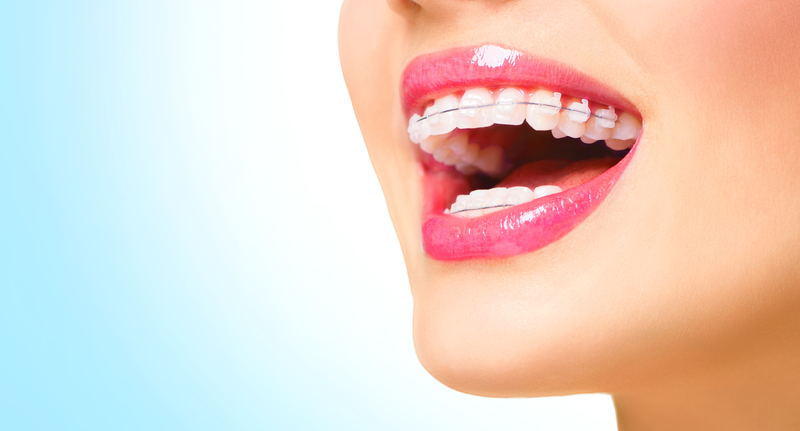
With advances in orthodontics in recent years, more and more adults are seeking out treatment for oral conditions they’ve lived with since childhood. Adults now comprise 50% of orthodontic patients—a major jump from previous decades. However, a beautiful smile knows no age limit. Today’s orthodontic patient has options for braces that they never had before. Learn your options for orthodontics as an adult and why you shouldn’t put off treatment just because you are an adult.
Braces Help Your Oral Health
Most people know that braces are for straightening your smile into something beautiful. Not everyone knows that braces can help improve your oral health significantly. If your teeth are crooked, they become much harder to brush, as teeth are at angles that make it difficult to reach every surface of your tooth. Flossing is even harder with crooked teeth. If you don’t properly clean away plaque that coats your tooth enamel, then you will most likely find yourself with some form of tooth decay or signs of gum disease. Cleaning your teeth also becomes a daily struggle, as you must clear away plaque every single day to avoid oral health issues.
Teeth that are straighter are much easier to clean and they take less time. The American Dental Association recommends brushing your teeth at least twice a day to remove plaque that erodes away your tooth enamel. Patients should also floss at least once a day. Those tasks are very easy to do when your teeth are straight and you can clean them in just a minute or two. Orthodontics is also great because an orthodontist has been to dental school and can direct you to a dentist if they notice oral health issues forming.
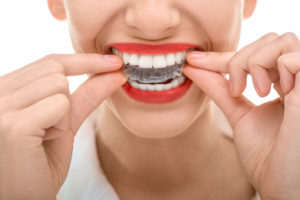
Correcting Bite and Alignment
Having proper bite and alignment is critical for speech. We treat children often for bite and alignment issues, as these are easily correctable when a person is young and the jaw is still forming. For child orthodontics, we take special care to ensure that the upper and lower jaws line up with one another properly. An incorrect alignment can put you at risk for broken teeth later on in life and can affect your ability to speak, eat, bite and chew correctly.
Although it is more difficult to do as an adult, we can perform orthodontic treatments that can correct bite and alignment issues. If you have had a speech impediment all your life due to bite or alignment issues, you can finally find a remedy through orthodontic straightening! For severe cases of bite and alignment issues as an adult, surgical orthodontics may be the best way to transform your smile.
Get Ahead Professionally
There are around 4.5 million Americans that receive orthodontic treatment via braces each year. 25% of those patients are adults. In fact, each year more and more adults find themselves with adult braces. Not only can orthodontic treatment help your oral health, but it can also help get you ahead professionally. Studies show that those who receive orthodontic treatment appear more confident, successful, trustworthy and attractive to their peers. People with straighter teeth are considered happier and healthier. They are also 38% more likely to be perceived as smart. Your teeth are one of the first facial features others notice. Make an impression that will wow others by straightening your teeth!

Your Treatment Options
Adults get the best deal when it comes to orthodontics: they have every option available to them! Children and teenagers are limited in their orthodontic options, but adults can choose what orthodontic treatment they want. You can choose traditional metal braces to straighten your teeth, ceramic braces, lingual braces or Invisalign treatment. Ceramic braces are similar to traditional metal braces, except that they are made from naturally-white ceramic material. Even the archwire can be made white like the brackets to blend in with the whiteness of your teeth.
Lingual braces are one of our most popular adult braces options. These are essential metal braces that are custom-made to fit the back of each of your teeth. We take impressions of your teeth and create a metal shell for your tooth-back complete with brackets and an archwire. Others won’t realize you have adult braces because this hidden apparatus lies on the tongue-side of your teeth.
For an even more discrete straightening option (which is a favorite among adults), you can invest your time in Invisalign. This is a series of transparent aligners that we custom-make for your teeth. Using digital technology, we can map out the trajectory of your teeth as they straighten and make aligners you can wear and switch out every 1-2 weeks. Adults love this option because they have the freedom to remove the aligners as they please. You can remove them for eating, sports activities, and cleaning your teeth as you normally do. This is an option that provides amazing freedom while undergoing adult braces treatment.
Receive Your Adult Braces today!
There are many benefits for receiving adult braces. You can improve your oral health and decrease your risk for tooth decay and gum disease. You can boost your confidence, correct bite and alignment, and exude success with a straighter smile. If you would love to have the benefits associated with adult braces, call Belmar Orthodontics today at (303) 225-9016 and we’ll find a treatment plan that’s right for you!
Straightening Your Teeth Incognito-Style

Unlike traditional braces, Incognito or lingual braces are placed on the back of your teeth where they cannot be seen easily. This hidden orthodontics method is growing in popularity among those concerned about their appearance with braces. Incognito braces are completely customized to fit your mouth. If you are a working professional, a teen concerned about your appearance, a musician who plays a wind instrument, an athlete who engages in contact sports, or anyone who needs to keep the tooth-straightening behind the scenes, Incognito braces may be for you! What do Miley Cyrus, Duchess Kate Middleton, and Myleene Klass have in common? They all have benefited from the use of lingual braces! You can too!
Braces Are the Best Way to Straighten Teeth
There are many changes you can make to your appearance to help you get a leg up in your social and professional life. One of the best ways to do that is through straightening your smile. The only problem? You have to have your teeth professionally straightened so that they are done right. That’s why orthodontists exist and that’s what we specialize in—straightening your teeth.
Braces can not only improve your smile, but they can improve your confidence as well. Countless studies show that those who straighten their teeth end up having higher self esteem and confidence. Some studies—such as one done by Invisalign—showed that those with straighter teeth were perceived as more confident, successful, attractive and even trustworthy. Not bad for simply changing your smile, right?
Braces also help keep your teeth healthier. How? Crooked teeth provide plaque (and the food that makes plaque) plenty of places to get stuck. Food that becomes stuck is food that will eventually start wearing away your tooth enamel. Food particles become stuck much easier with crooked teeth than they do with straight teeth. Crooked teeth are harder to clean, are more awkward in your mouth, and they can even break easier. When you bite and chew, you exert pressure on your teeth to break up food into smaller pieces. That pressure can cause crooked teeth to crack or break, as some teeth with receive more pressure than other teeth. Straightening your teeth through braces is the best way to get your teeth healthier and prevent broken teeth.
For many adults, the thought of wearing braces for months makes them not want to straighten their teeth. That’s despite all the benefits straightening your teeth can give you. Many adults think of traditional metal braces and don’t want others to see a mouth full of metal. Millions have felt this way, so technology changed to allow adults (and even teens) the option of straightening your smile in secret.
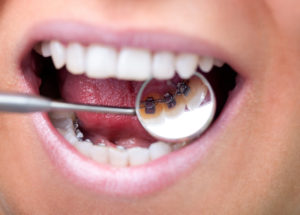
Incognito Lingual Braces
One of the best ways we straighten your teeth in secret is through Incognito lingual braces. If you’ve never heard of these, then you’re in for a treat! Traditional metal braces straighten the teeth amazingly well. That’s why these braces are referred to as “traditional” metal braces. However, some patients don’t love the thought of having a “metal mouth”. The remedy for that? Braces that lie behind the teeth instead of front and center on the teeth. We call these “incognito” braces because they are a hidden metal apparatus on the tongue-side of your teeth. It’s the perfect solution for having the strength and power of metal braces without compromising your appearance.
Millions of people wear braces each year. At least 1/4th of braces wearers are children and about the same amount are adults. Adults need options that allow them to keep their smile white and bright while also straightening it. We custom-make metal brackets for the back of each of your teeth after taking impressions of your mouth. We fit the metal to your teeth and will include brackets and an archwire just like traditional braces. Except, the entire appliance will stay hidden. Others will notice your smile improving over time, but they won’t know that it’s changing through metal braces. Straightening your teeth is easy through Incognito-style braces.
You Have Options
If you’re not completely sold on the idea of Incognito braces, you can call our office to learn more or even come in to the office to see these type of braces for yourself. However, we do have other options you can utilize for straightening your teeth. If you are looking for a similar discrete option comparable to lingual braces, you can investigate Invisalign.
Invisalign is a series of transparent aligners that transform your smile into something beautiful. You simply receive custom aligners every 1-2 weeks that slowly shape your smile into the straight pearly whites you’ve always wanted. You can remove the aligners for eating and drinking, sports activities, and for cleaning your teeth. It’s a simple, no-hassle option for straightening your teeth.
Clear, ceramic braces are also an option for those who like the idea of braces but also want them to be more hidden than metal on white teeth. Our ceramic materials mimic traditional metal braces (which we also offer), but these materials are naturally white, so they will blend in with your teeth. We can even make the archwire white as well. When it comes to straightening your teeth, you have options. However, our patients love the sturdiness of our Incognito lingual braces mixed with the hidden nature of this type of braces. We think you’ll love this option as well!
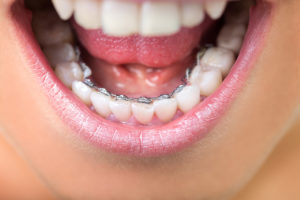
Improve Your Smile
If you could boost your confidence and self esteem, would you do it? You can through incognito braces! The best part about these amazing appliances is that no one ever has to know you are wearing braces. However, they will notice how awesome your smile looks. Others may even follow your example and straighten their own teeth. If you want to improve your smile today, don’t hesitate to take action! Call our Belmar Orthodontics office today at (303) 225-9016 to learn more about Incognito lingual braces!
What Will Wearing Braces Be Like?
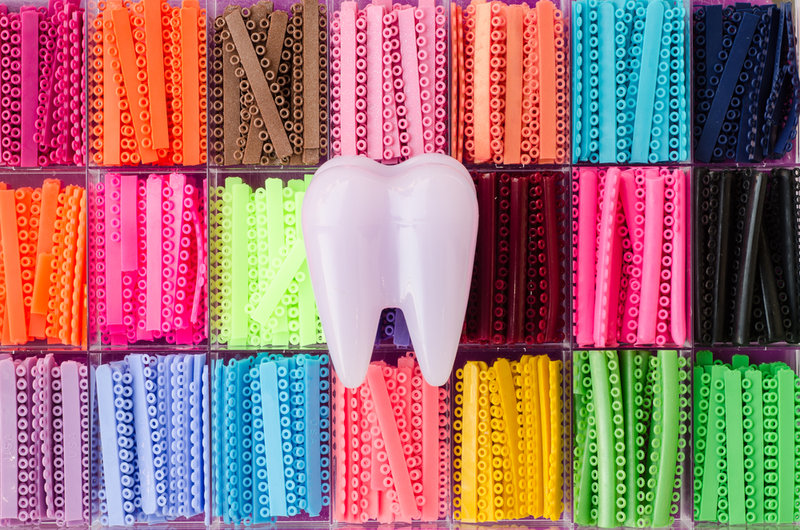
Whether you are currently wearing braces or looking into getting some, knowing what your life with braces will look (and feel) like can help you prepare for success and choose the right form of treatment for your needs and lifestyle. Belmar Orthodontics can help educate you on what to expect wearing braces and what you can do now to achieve the best outcome.
Braces: What Are They?
Braces have been around for many centuries. Researchers have found that orthodontic appliances actually date back as early as 1000 B.C. Even then people were anxious to straighten out their smiles. Braces are appliances that exert a certain amount of force on the teeth in order to align the top and bottom sets of teeth as well as the upper and lower jaw. The goal is to have a straight smile with teeth that are set in a beautiful arch around the mouth and jaws that line up with the teeth coming together evenly.
Components of Braces
Braces consist of brackets, wires and bands. On the teeth, they look like metal squares on each tooth with metal wires going through those metal squares. The squares are the brackets and they are cemented to the center of each tooth with a special bonding agent. The bracket is designed so that it can support a wire (called an archwire) that will go through it. Think of all these brackets as tiny workers who are holding up a strong wire.
There are two archwires: one that goes along the top teeth and one that goes along the bottom teeth. These archwires help shape the arch of the teeth in the mouth so that they make a perfect arch and so the upper and lower teeth line up with one another. Traditional metal braces also have rubber bands that go around each individual bracket. These are to help the gums from catching on the metal bracket hooks and also provide a patient the ability to add a pop of color to their mouth. Bands come in all different shades and can be customized to what you like.
Types of Braces
There are many options when it comes to wearing braces. Your option will largely determine how your braces look and how they feel. We provide the following options to our patients:
- Traditional Metal Braces – This is the option we explained above, and the most popular option among patients. This is also the most economical choice when it comes to price.
- Incognito Lingual Braces – This is an option similar to traditional metal braces and are popular with professionals and adults. The brackets are bonded to the back of the teeth and provide a hidden straightening apparatus to patients. Patients will adjust to these braces much the same as traditional metal braces, only they’ll feel the brackets on the tongue-side of their teeth instead of the cheek side.
- Clear Ceramic Braces – Much like metal braces, this system uses brackets to align the teeth. However, the brackets are made from ceramic and their white material blends in with the teeth. Even the wires can be made white. These will act and feel the same as metal braces, only with better blending with the teeth and greater stain-fighting power.
- Invisalign – This is a system of progressive, custom-fit aligners that gently move the teeth into their ideal position. The clear, removable design of these aligners renders this orthodontic treatment virtually invisible to others. It will feel like you are wearing a snug retainer or covering for the teeth and needs to be worn throughout the day. This treatment method allows patients to drink, eat and clean the teeth normally and with ease.
What To Expect Wearing Braces
There is some discomfort and adjustment when first wearing braces. Because the brackets are bonded to the teeth and there are archwires adjusting the position of the teeth, you may be sore for a few days. It’s best to eat soft foods the first few days as your teeth adjust to their appliances. A simple over-the-counter painkiller can help with discomfort. Although many patients feel mild discomfort when first wearing braces, some patients don’t.
It will take a few days to get used to the brackets and wires. You will be able to feel them during the day as they sit against your cheeks. However, you will get used to them in about 1-3 days to the point where you won’t even notice your braces. They will soon become a part of you and cleaning them as well as going to orthodontic appointments will become routine. As with any new thing, there is always an adjustment period. With braces, that adjustment period is short.
You’re Not Alone
When it comes to wearing braces, you’re definitely not alone. There are over 4.5 million people any given year that are wearing braces. Many of those are teenagers, but a large portion are also children and adults. In fact, at least ¼ of all braces wearers (or 25%) are adults. Each year more and more teenagers and adults are receiving braces.
In the past, there used to be many stigmas about braces, such as them being unattractive. Studies show, however, that braces have become quite the luxury and are seen as such. The New York Times, for example, did an article about braces and just how important they are to people. Many families literally go without needs and many wants to receive orthodontic care, even if money is really tight. Braces are a luxury that many children, teens, and adults alike are eager to have. Just think: when wearing braces, you are wearing a luxury item.
Your Braces
Remember, braces are something to have fun with! If you have traditional metal braces or ceramic braces, you can dress up your braces with colorful bands that make you stand out. Or you can choose an option that is discreet. Overall, no matter what option you choose, wearing braces for a time will help keep your mouth healthier and your smile straighter. A better smile leads to more confidence. Who wouldn’t want that? If you’re ready to receive a great set of braces, call our Belmar Orthodontics office today at (303) 225-9016!
How Do Adult and Child Orthodontics Differ?

Advancements in adult and child orthodontics have triggered a rise in adults seeking treatment for oral challenges they have had for years. When deciding to pursue orthodontic treatment, understanding the differences between adult and child orthodontics can help you decide what type of treatment is right for you. Everyone should want their best smile. Feeling confident about your teeth and smile is essential for healthy self-esteem and confidence. You can achieve both of those benefits with braces.
Benefits of Braces
For years, braces have helped millions of people receive a more beautiful smile. About 4 million Americans on average each year are wearing braces. You may think that braces are mostly for teenagers, but you may be surprised to know that about 25% of braces wearers are actually adults. A large portion of those 4 million are also children. Braces benefit people of all ages and it’s never too late to get your own set. Why are braces so important? Straighter teeth keep the mouth in proper alignment and help even out the pressure placed on the jaw each time you talk, bite, eat and more. When the teeth are straighter, they are easier to clean, especially to floss in between the teeth. This is why people with straighter teeth have a reduced risk for oral health problems such as tooth decay and gum disease.
Tooth Decay and Gum Disease
The biggest oral health problems are tooth decay and gum disease. These problems come from lack of good oral hygiene habits. If you skip on brushing and flossing the teeth (or not doing them enough) you may start to have problems. When food sits on the teeth, the sugars from the food you ate (or drank) mix with bacteria in the mouth. This mixture creates a sticky acidic substance called plaque. That plaque works hard to erode your tooth enamel. If it sits on the teeth long enough without being cleaned through brushing or flossing, it will seep into the center of your tooth, called the pulp. This is where that acidic plaque will start to decay your tooth. If left untreated, the problem can become severe. Tooth decay is the most wide-spread childhood disease.
Gum disease is similar to tooth decay, but it has to do with the gums. Plaque is not your friend in this case either. When it sits on the teeth for too long, it can irritate the gums. You may notice your gums begin to turn more red and they may become inflamed. Over time, if good oral hygiene habits are not established, the gums will begin to recede from the teeth. This can eventually cause the teeth to begin falling out. About 64.7 million American adults suffer from some form of gum disease. That’s not even including the number for children! Even though tooth decay and gum disease are so wide-spread, they can both be prevented by brushing and flossing several times a day and by establishing and keeping good oral hygiene habits.
Child Orthodontics
One area we specialize in is child orthodontics. A large portion of the people that wear braces are children. The American Association of Orthodontics recommends that children have their first orthodontic visit between ages 7 and 8. Having an examination early-on helps prevent the progression of orthodontic issues that may be present. In children, we can detect certain orthodontic problems—such as underbite or crossbite—that are present. These problems can be fixed with child orthodontics and other bite and alignment problems such as overbite, openbite and malocclusion. The jaw is still forming in children, so performing child orthodontics at this age can help easily correct problems that are harder to deal with as an adult. Even if your child does not show any signs or symptoms of orthodontic complications, you can still benefit from child orthodontics. Some benefits include:
- Monitoring the facial and jaw development
- Observing the progress of incoming teeth
- Guiding incoming teeth into their proper positions
- Reducing the risk of impacted teeth
- Decreasing the risk for permanent tooth extractions
- Detecting hidden dental issues
Adult Orthodontics
Adult and child orthodontics are very similar. However, it often takes longer to correct bite and alignment problems in adults than it does children or teenagers. This is because the jaw and mouth has stopped growing by adulthood. If bite or alignment problems are severe, an adult may have to look into receiving surgery to correct the problem. Adults also have a few more options when it comes to what kind of braces they would like. Adults and teenagers have the option to choose these types of braces besides traditional metal braces:
- Lingual Braces – These are also known as “Incognito” braces. They are a hidden braces apparatus on the tongue-side of your teeth. Worn on the inside, no one will even know you are wearing braces.
- Invisalign Transparent Aligners – This is a series of removable transparent aligners that are custom-made for your teeth. They can be removed for activities such as eating, drinking, sports and more. Because they are transparent, they are also a secret way for adults and teenagers to discreetly straighten their teeth.
- Clear Ceramic Braces – Made of ceramic material, these braces fit in with the color of your natural teeth. Ceramic material helps reduce the risk for demineralization and staining.
Your New Smile
Whether you are an adult or child, it’s never too late to improve your smile! For people of all ages, a straight smile boosts confidence and self esteem. For adults, that new smile of yours could help you land a job. Studies have also shown that straighter smiles make you appear more confident, successful, attractive and even more trustworthy to others. The benefits of braces are just too good to pass up! If you would like a new smile today, call our Belmar Orthodontics office at (303) 225-9016!
Why Adult Braces Are So Important
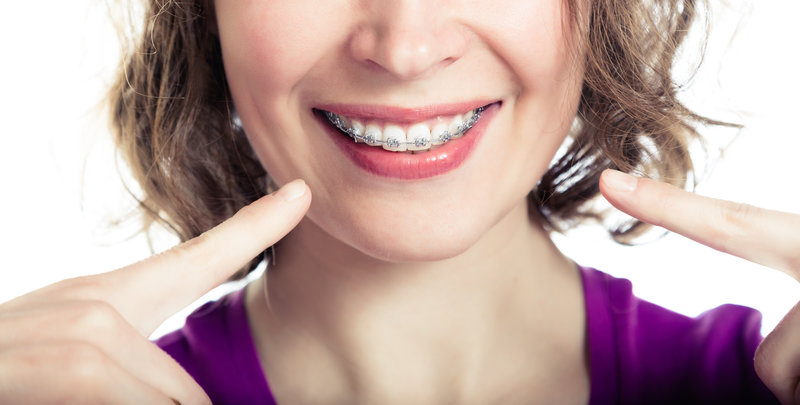
How important are adult braces? Not only do braces enhance your appearance, but they help prevent tooth decay and oral health problems. The American Dental Association tells us that braces are used to correct bite problems and malocclusion. Correcting these problems helps prevent oral health issues such as tooth decay, gum disease, jaw problems and even tooth loss. Proper orthodontic care goes beyond simply improving your oral health. Braces will give you added confidence that will boost performance in all facets of your life. Let us show you just how important braces are and why you should invest in them whether you are an adult or a child!
Braces for Children and Teens
About 75 percent of orthodontic patients are children and teens. Of that number, the majority opt to have traditional metal braces. Traditional metal braces are the most economic choice for orthodontic care if you are looking to improve your smile without breaking the bank. Children can receive braces as early as 7 or 8 years old depending on their needs. The adolescent years are the most common period for receiving braces when the head and mouth are still growing (especially the jaw). When children as young as 7 or 8 receive orthodontic treatment, it is usually to correct problems with alignment or bite that can become severe in later years. This early intervention ensures that teeth come in correctly in a child’s mouth and that the bite is aligned correctly. This will help correct problems with speech, biting, chewing, talking and even physical appearance.
Why Orthodontic Care Is Important
Orthodontic care during the adolescent years is generally used to correct alignment by straightening the teeth. Both bite correction and proper alignment is vitally important to oral health. When the teeth are crooked, problems such as tooth decay and gum disease can easily set in. This is because food becomes trapped in the teeth when you eat and is much harder to remove when the teeth are crooked. Gums can become irritated when plaque sits on the teeth for too long. Over time, plaque-infested gums can become red, swollen and can bleed easily–especially when flossing. Gums can even begin to recede to the point where the teeth fall out. Recession occurs more frequently with teeth that are crooked and harder to clean. Teeth that have been straightened through orthodontic care avoid some of these challenges.
When bite is misaligned, the teeth can come in crooked in a child. Patients may have overbite, underbite, crossbite, openbite or malocclusion. All of these types of misaligned bites will interfere with eating and speaking as well as the physical appearance of the mouth and face. This is because many of the teeth overlap one another abnormally or one jaw protrudes more than the other. Orthodontic care through braces for children and adult braces can correct these problems. Orthodontic treatment through adolescent and adult braces can help ensure that there is enough space for all the teeth to sit comfortably in the mouth.
Other Reasons to Invest in Braces
Are braces something you should invest in? The answer is yes! Whether you seek adult braces or braces for children and teens, you are making a decision that has far-reaching effects. The majority of people will experience crooked teeth at some point. What you decide to do about it is up to you.
Braces—even adult braces—are actually quite desirable today according to reports by the Los Angeles Times, The Washington Post, The Wall Street Journal and more. The amount of adults wearing braces rose 24% between 1989 and 2008 alone and that number has continued to rise. Why? Braces have become more affordable and more attractive. Insurance even covers part of the cost for many patients. Braces are also more comfortable than they were in the past and there are more options for patients seeking orthodontic treatment. The social benefits of braces alone draw people in as well.
Studies About Adult Braces
There have been many studies done about the importance of braces. Invisalign conducted one such study several years ago that recorded more than 1000 responses by pedestrians on the street. These pedestrians were asked to choose from two pictures of people placed side-by-side. Who would they trust more? Who seemed more confident? Respondents did not not beforehand that the comparison was between people with straight smiles and people with crooked smiles. From that study, it was found that those with straighter smiles were perceived as more confident, more successful, more attractive and up to 70% more trustworthy. All from a better, straighter smile!
Proper orthodontic care can also get you ahead when it comes to job interviews and new opportunities. Because a straighter, more beautiful smile has been shown to exude all of the characteristics above, those traits are also perceived in job interviews and during first impressions. Adult braces can help you land that job you’ve wanted and can help you get ahead professionally.
Your Options at Belmar Orthodontics
Traditional metal braces are just that: traditional. This is the most common option chosen by patients when selecting what type of orthodontic care they want. This choice is often popular with children and many teens and has proven through the years to provide exceptional straightening power. Adults and teenagers alike will sometimes avoid needed orthodontic treatment because they find traditional metal braces to be distracting or unattractive. Because of this, we provide you other options when it comes to straightening those pearly whites. These include:
- Incognito Lingual Braces: Metal braces attached to the inside of the teeth that stay hidden.
- Invisalign Transparent Aligners: Transparent aligners that are changed every few weeks to shape your teeth into proper alignment.
- Ceramic Clear Braces: The look of traditional metal brackets made in ceramic form. Both the brackets and wires can be made white to match your natural teeth.
At Belmar Orthodontics, we do all that we can to ensure your mouth stays healthy and your smile bright. Our success is dependent on your success. This is why we offer you so many options when it comes to straightening children’s teeth or investing in adult braces. To learn more about child and adult braces, call our office today at (303) 225-9016!
Why You Need Professional Orthodontic Care
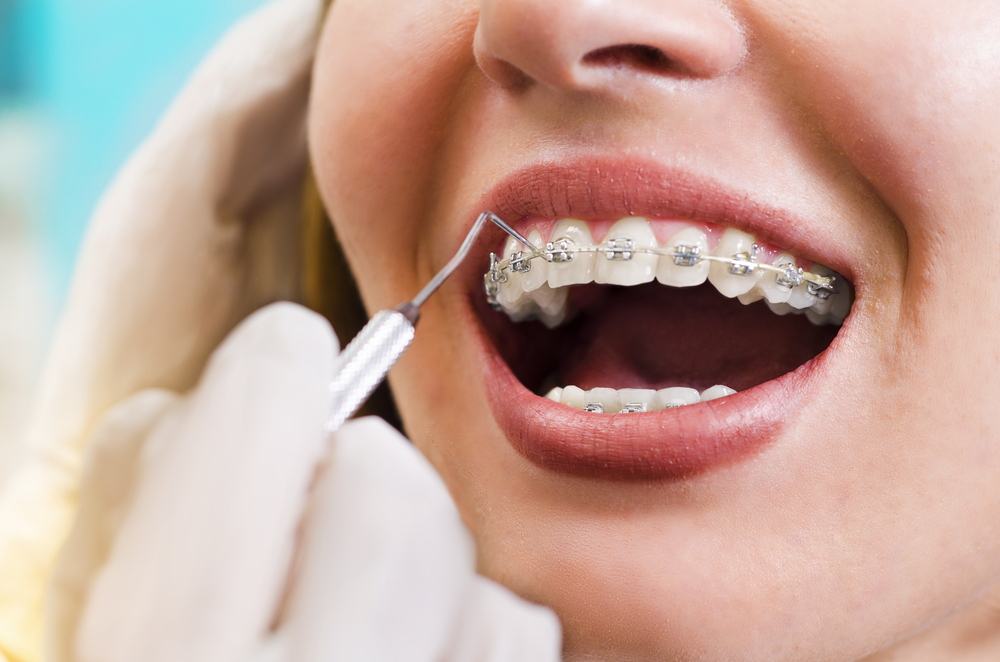
Why is professional orthodontic care so important? The economy has fluctuated from good times to bad times over and over in the last couple of decades. Some people try to cut corners when it comes to achieving healthy smiles by straightening their teeth themselves. Do “cutting corners” and “healthy” go hand-in-hand? Not at all! Only a professional orthodontist is trained to provide you a completely healthy and straight smile that you can’t get anywhere else. Proper orthodontic care can ensure that your teeth stay healthy and free from gum disease, tooth decay and tooth loss. It will also ensure that your teeth move appropriately so that your bite, alignment and function work the way they were designed to. At Belmar Orthodontics, we can provide you a smile that you will cherish the rest of your life. Find out why professional orthodontic care is worth the time, money and effort to achieve a wonderful smile.
Cutting Corners On Your Oral Health
We all know that problems will arise if proper oral hygiene habits aren’t followed. That includes brushing and flossing several times a day (after every meal if possible), seeing your dentist and orthodontist as needed, and making sure the teeth stay clean, straight and healthy in general. You would never want to save some time by cutting out brushing your teeth altogether right? How about flossing? Or maybe never seeing a dentist? There are major problems that can arise from choosing to cut corners on your oral health. Some of the main problems are gum disease and tooth decay that can literally rot your teeth out.
Gum Disease
Gum disease affects over 64.7 MILLION American adults. That means that there are many millions of Americans not taking proper care of their teeth. What does gum disease cause? It begins with gingivitis, or a buildup of sticky bacteria-filled plaque that coats the teeth and irritates the gums. Without cleaning the teeth often enough, the gums will begin to become red, inflamed and even bleed frequently. Skipping on the hygiene will make gingivitis more severe until it becomes full-blown gum disease, also known as periodontitis. At this stage, the gums will recede and the teeth can literally fall out. Yikes! Nobody wants that right?
Tooth Decay
Tooth decay is a problem that’s not far behind gum disease. It also has its beginnings when a person chooses to skip on their oral hygiene practices and keeps doing it. That sticky plaque that coats your enamel is a mix of bacteria and sugar that is actually an acidic substance. The acid will erode your hard tooth enamel and eventually seep into the soft center of your tooth where it will accelerate tooth decay.
Do-It-Yourself-Orthodontics
Gum disease and tooth decay are both serious conditions that you want to avoid at all costs. You only get one set of teeth, so the goal should always be to keep them healthy, right? Cutting corners (even simply skipping cleaning the teeth) causes major damage to your oral health. Do-it-yourself-orthodontics is a new trend that has popped up on the scene. ABC news reported on this trend and how damaging it can be to your oral health. Many people wanted to cut corners with proper orthodontic care and do their own straightening at home using crude methods with rubber bands, fishing line, paper clips and any other material you could think of.
Not surprisingly, many patients (especially adolescents) who attempted to do their own orthodontic care damaged their teeth “so extensive[ly] that teeth cannot be saved.” That comes straight from the president of the American Association of Orthodontists. Do-it-yourself methods of orthodontics are bound to lead to many more oral health problems than you could have ever imagined. So far, it has proved to be disastrous for those who attempt to cut corners. Remember, cutting corners on your health is just that…cutting corners. Nobody comes out a winner.
Proper Orthodontic Care
When you only have one set of pearly whites, why take a chance on losing them? Orthodontists must extensively train for years and attend dental school. They then take an additional 2-3 EXTRA years to study orthodontic practices and how to keep your mouth the healthiest it can be. You get what you pay for and if that’s trying to straighten your own teeth with fishing line, you can bet that you’ll have a low-quality results. With professional orthodontic care, you’re going to get a professional and effective experience. Plus, you’ll actually save yourself time, money and risk of disaster by investing in orthodontic care the proper way.
The cool thing about our orthodontic office is that we offer more than just traditional metal braces. If you want to straighten your teeth more discreetly (or not have anyone know), we have Invisalign transparent aligners, lingual braces, ceramic clear braces, retainers and more. At Belmar Orthodontics, you can be sure to get a beautiful, straight smile AND keep all of your teeth healthy and strong for years to come. Simply call our office at (303) 225-9016 for your free consultation!

